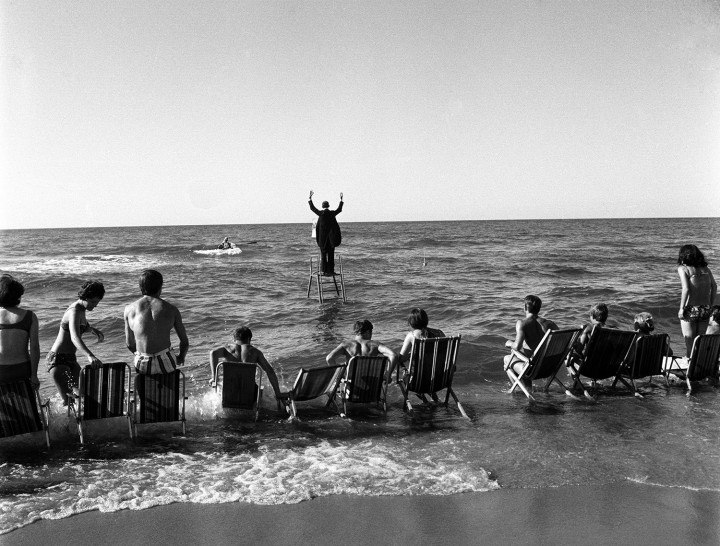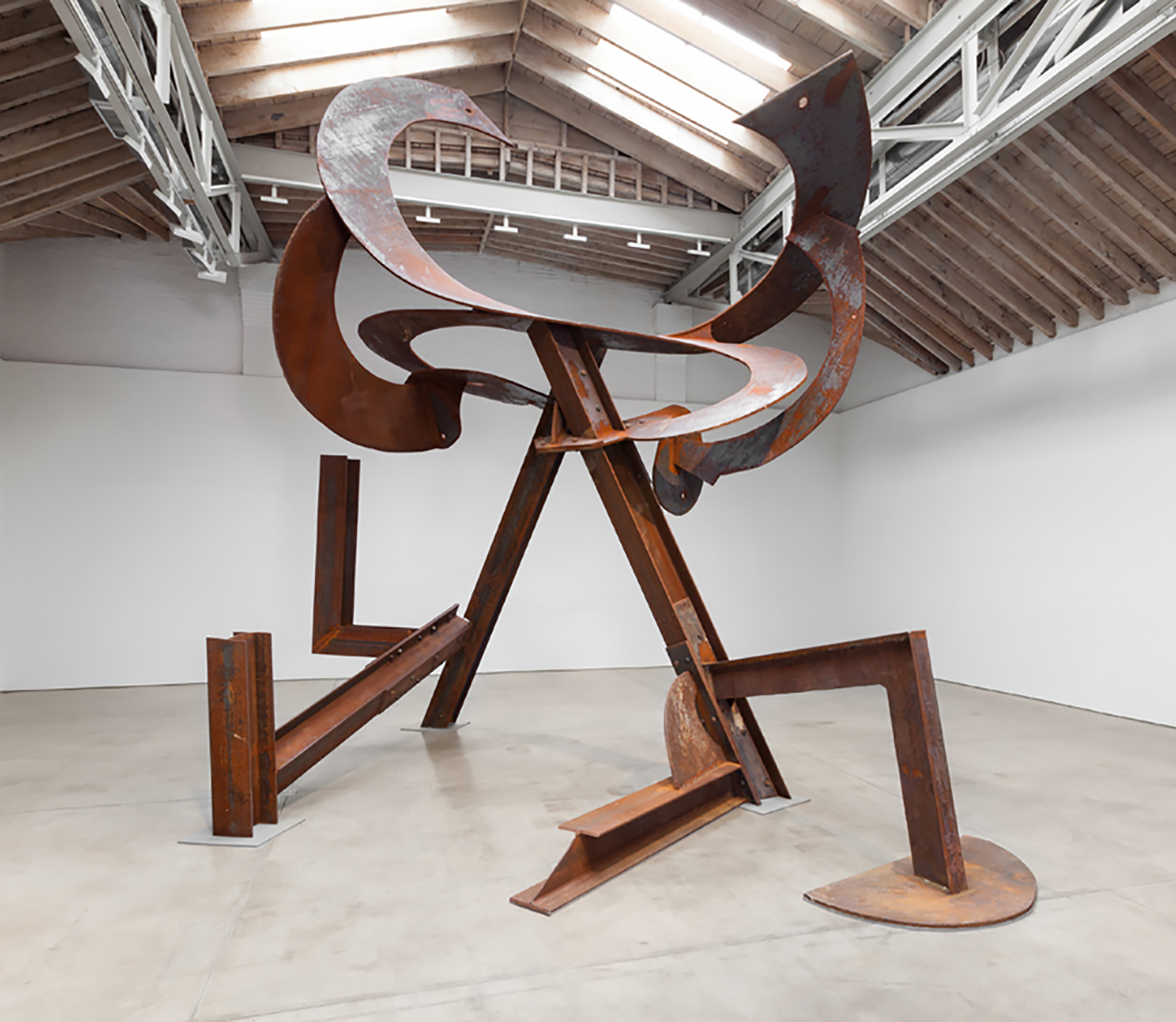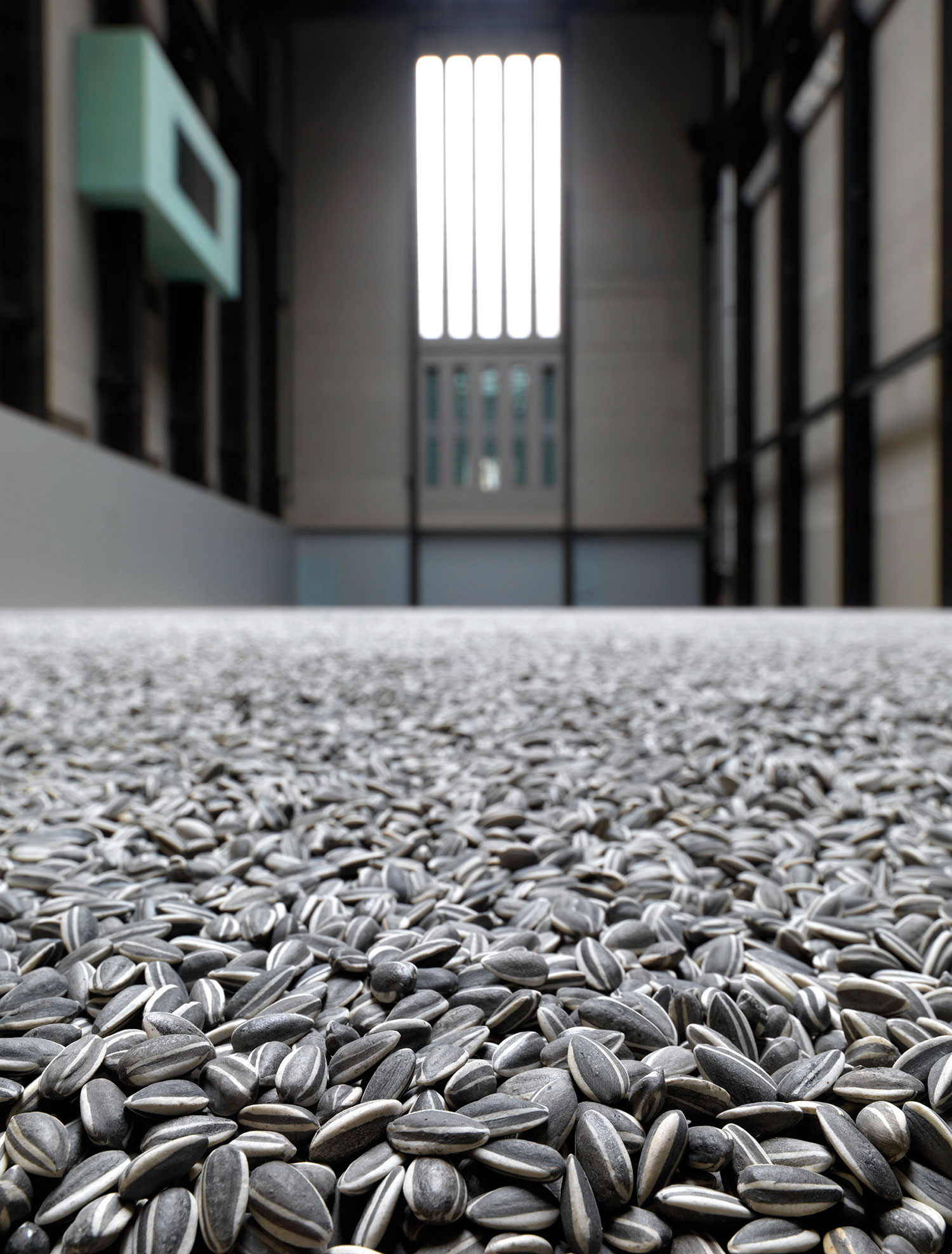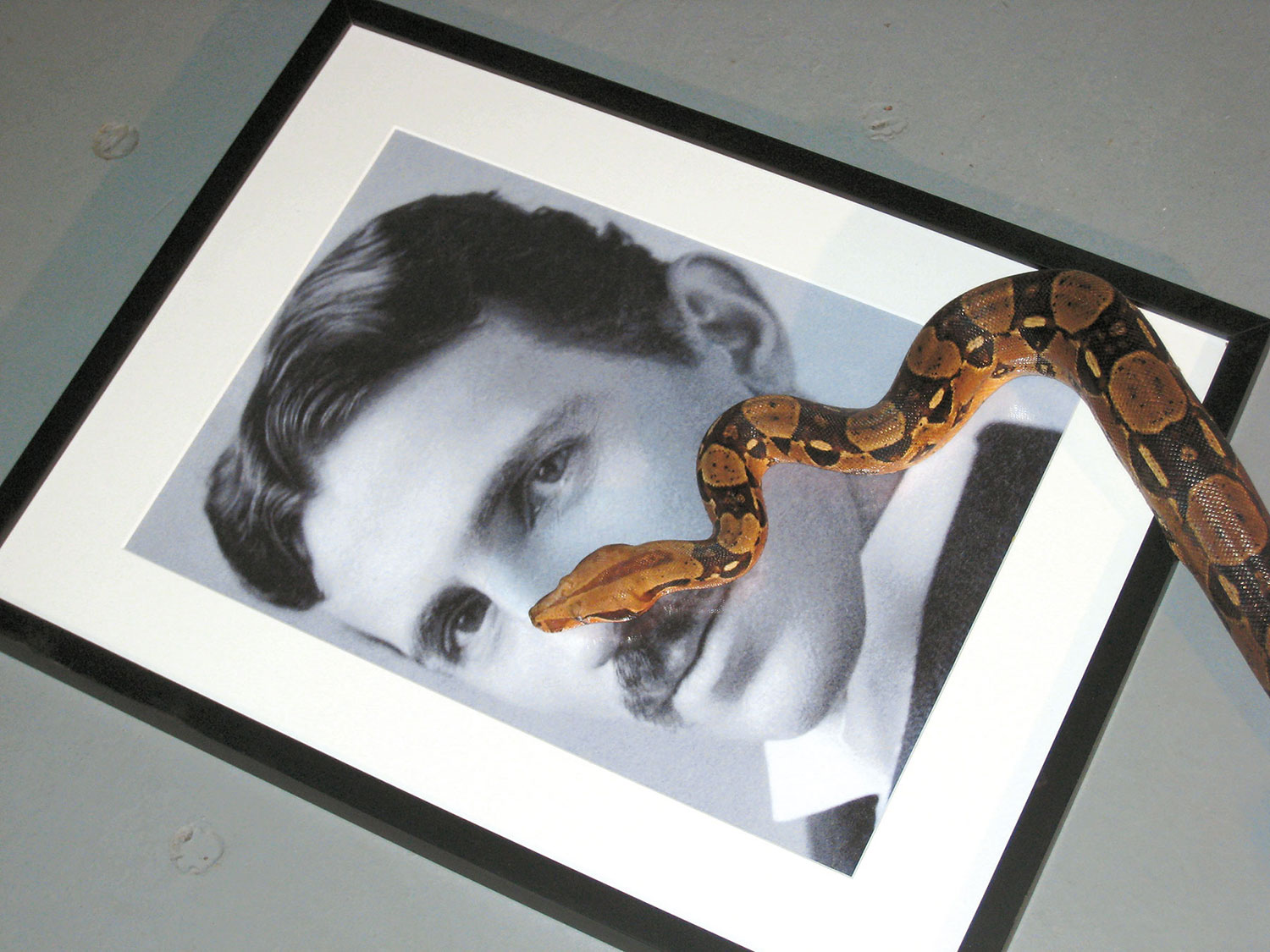
Tadeusz Kantor was a man of vivacious contradictions both politically and in his work, an artist who dramatized as well as provoked. His process-based methodology was comparable to a sponge that absorbs the various styles of art history and habitually condenses them. Societal repression, cultural waste, defenselessness and a variety of approaches to the ubiquity of death were recurring themes in Tadeusz Kantor’s practice. His work was shaped by both World Wars — the annihilation of the Jewish population in Krakow and later by the decline of public cultural life in the repressive society of communism during the Cold War. Today Kantor, who had early on proclaimed and lived a boundary-crossing concept of art, is among the best-known Polish artists of the 20th century. He is especially known as a pioneering reformer of the theater, whose purpose was to bridge the distance between the stage and ‘real life.’ His touring company Cricot 2, which was founded in the ’50s with Maria Jarema and Kazimierz Mikulski, made Kantor world famous in the ’70s by and large for his “Theater of Death” cycle. His work, however, is also comprised of recently rediscovered Happenings, paintings, drawings, collages, sculptural props and costumes from his theater pieces, which he viewed as autonomous art objects. In addition he published a series of manifestos in which he explained the theoretical foundations of his approach to art.
One of the most important influences and visual foundations for Tadeusz Kantor’s work after the Second World War was Art Informel. From this point on he used materials such as thick oil paint, old and used objects like rags, deteriorated books, trash and worm-eaten wood. All of the substances and objects utilized in his paintings and collages, as well as his stage sets and theater pieces, codify his definition of ‘matter,’ which was shaped by Rosalind E. Krauss’ and Yve-Alain Bois’ concept of ‘formlessness.’ The use of ‘formlessness’ is a stylistic device that takes on the repression of the post-war period, in an effort to awaken emotions and to recognize a reality outside of restrictive norms. In his play The Dead Class (1975) Kantor attempted, through the wretchedness of objects and characters, to evoke “human arousal and […] human cries.”1 Kantor’s favored ephemeral materials act as recurring messengers of death, which often made appearances as people, mannequins, marionettes or symbolically as rattling wooden skeletons, as in Machine of Love and Death (1987).

The examination of death in its various facets is exemplary in the production The Dead Class (1975), his most widely known theater piece. It was not based on a concrete plot; rather it was generated out of ritual acts and a dynamic between movement and stasis, structured on the constantly repeating musical motif of Zygmunt Krasiński’s Valse François. The production could be described as a mixture of play, Happening and sculptural installation.2 The many biographical references in the piece serve to show memories of a bygone childhood — its setting is a classroom furnished with old wooden school desks and textbooks that have nearly worn to dust. The room is also filled with the memories of punishments suffered, which were recorded on the chalkboard, and of memories of the school restroom — a place of freedom. The actors are old men, for whom death is closer to than life; made-up to look pale, they carry live-size mannequins on their backs that are meant to symbolize their childhoods. The characters in The Dead Class are in Kantor’s terms not clear-cut individuals without ambiguity, but are a composite of recollections of different people. As a group they represent, together with the figures, a collective memory. Mannequins play a large role in Kantor’s work and serve not only as messengers of death but also as signifiers of repression. Kantor locates the origin of these mannequins to an area on the periphery of sanctioned culture, somewhere between fairground stalls and a magician’s chamber. They are inserted to satisfy the taste of the masses, to exercise uninhibited cultural critique and thus serve ‘the genuine truth.’ Moreover, the mannequins symbolize the blasphemous: “…every dark, nocturnal and rebellious side of humanly acts. They emerge from crime and death as a source of insight.”3 Art theorist Hal Foster also addressed the theme of the repressed when he interpreted the interest in mannequins as a process of dealing with wartime trauma — the “resurfacing of the repressed” coupled with the insights of psychoanalysis in the ’20s, which determined the meaning of compulsive repetition and the death drive within the constitution of the subject.4 Kantor’s figures form an antithesis to any notion of physical beauty, for example that of cleanliness. They are rather characterized by gray, formless dustiness, like figures resurrected from the netherworld.
With his Happenings he succeeded in bringing theater outside of specific settings usually designated for theater, and forced viewers to rethink existing constructions of reality. This required ingenuity, however, as the Happenings were not easily carried out during a ban on public assembly in Poland during the Cold War. Happenings like The Letter were only realized because they were declared to be traveling carnivals. Another, lovely, example of such a Happening is The Sea Concert, Osieki (1967). Dressed in a striped bathrobe Kantor directed an absurd scene as he walked up and down the beach: Edward Krasinski, one of the most important figures in the Polish art scene of the ’60s and ’70s, functioned as conductor as he stood on a pedestal with his back to the public as he ‘conducted’ the waves. This ‘symphony of waves’ was accompanied by a ‘motorcycle fugue’: on a cue from the conductor five motorcyclists raced along the beach at the water’s edge. An additional cue set a rattling tractor in motion. Then, the conductor shot a flare pistol into the air and off on the horizon a lifeboat appeared with howling sirens. For the finale the conductor emptied a bucket of dead fish in the direction of the audience and shed the tailcoat he had been wearing. The Sea Concert belongs to Kantor’s four-part series “Panorama — Happenings at the Sea.” His Happenings were documented by photographer Eustachy Kossakowski and as a result they have been preserved for posterity.5

His process-based method of working became an important constant in his work. As he could not accept bringing things to a close, he hoped that continual movement would bring him closer to reality. At the same time, he often felt compelled to conserve things like manifestos, periodicals and props due to his own forgetfulness. In 1979 he created an archive in Krakow to document his work.6 The constant depiction and repetition of certain objects, fragments and themes create, along with the process, a sensitive point in Kantor’s work. Objects and things that Kantor incorporated on the stage could not be designated, in a traditional sense, as ‘props.’ They were dealt with more as sculptural-performative objects, which, during productions, were equally as valuable as the performers. Today these objects are considered autonomous artworks, whether or not they were originally used in productions or if Kantor himself made them. The most important of these works come from the pieces The Dead Class and Machine of Love and Death. The latter, Kantor’s last play, was produced by Centro Ricerche Teatrali in Milan and by Antonio Pasqualino, director of Museo Internazionale delle Marionette, in Palermo. Today the stage set is still in the possession of this private puppet museum.
Though Kantor always dealt with the retention of memory, he was aware that memories do not represent objective reflections of the past. People forget, distort and repress when necessary, as the period between the two World Wars will attest. This process is reflected by Kantor with his theater company Cricot 2. Here Kantor’s role as an actor was central: he himself was often on the stage or present at events, and he always chose a viewpoint from which he could act as ‘director’ or ‘puppeteer.’ Kantor promoted, in the role of demiurge, the repressed aspects of society like death and sexual taboos; through his actors he cast light onto these subjects and kept them in check. Perhaps this is Kantor’s greatest achievement as an artist — that he confronted socially undigested events and adopted them. Kantor needed, as he himself acknowledged, the opposition of the Wall, which he could break down in his mind and use to awaken his creativity.7 He died in 1990, symbolically shortly after the fall of the Iron Curtain, “almost” on stage.

Kantor’s work continues to exert great fascination: in Poland he is not only frequently considered a role model and source of inspiration but also an übervater, or father figure, to artists of a younger generation. Study of Kantor’s work alongside that of Robert Kusmirowski and Piotr Uklanski, among others, is sometimes contentious. On the other hand, Kantor is also highly regarded outside of his native country. As artist Daniele Buetti expressed in a personal conversation: “[he] entirely changed my attitude about art and production.” A number of contemporary artists and performers have been influenced by Kantor, including Christian Boltanski, Markus Schinwald, Christoph Marthaler and Christoph Schlingensief. Although Kantor was known and recognized as a theater director during his lifetime, his extensive work has sparked tremendous interest posthumously — especially among younger artists — and one can assume that art historical texts will be revised accordingly.





